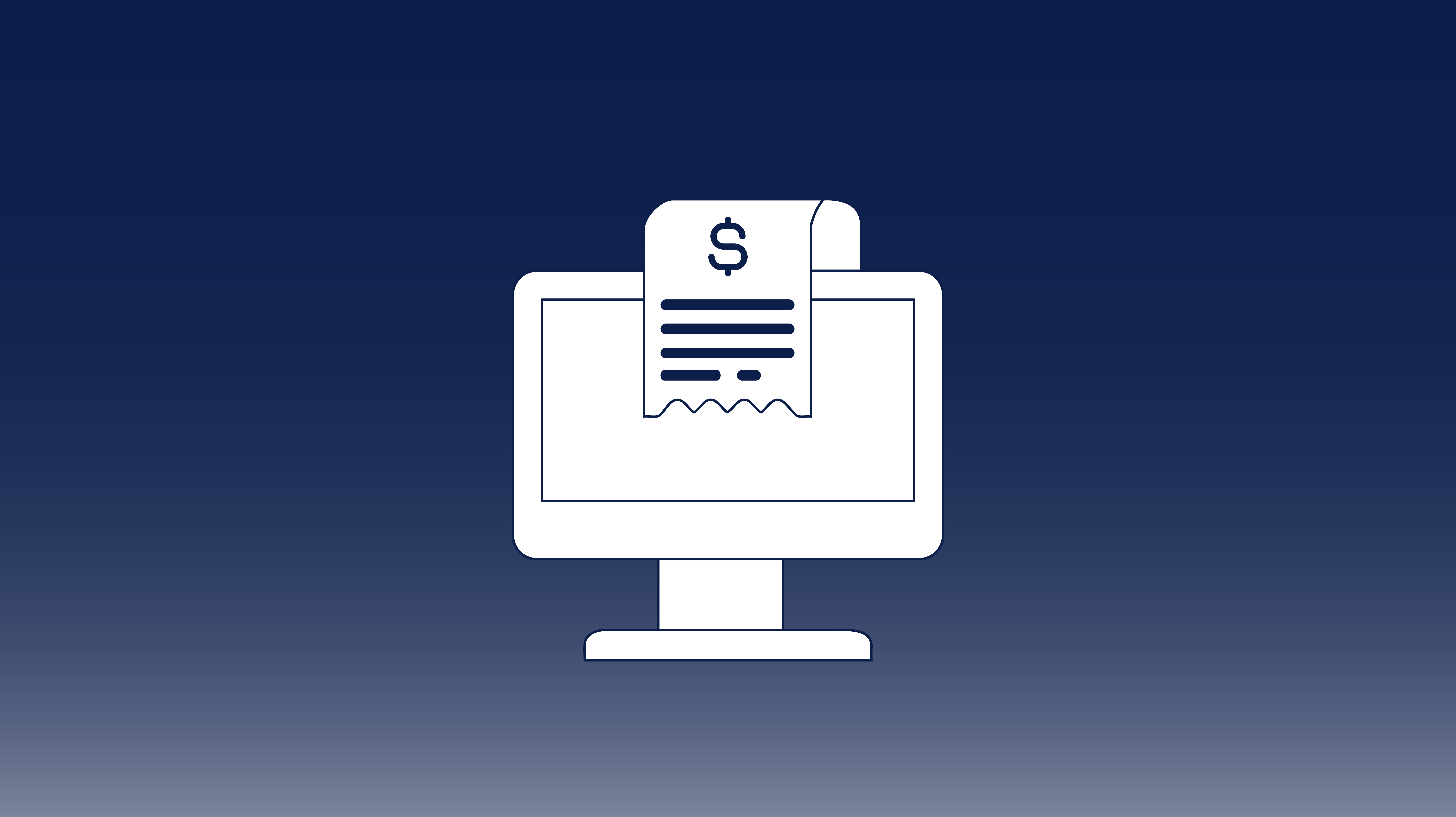Automated Accounts Receivable Programs: Cutting DSO by 30% in Six Months
In today’s economy, speed to cash is as important as speed to market. Companies that let receivables linger for 60, 75, or even 90 days are putting...
4 min read
October 10 2024
by
![]() Chris Cosgrove
Chris Cosgrove

With digital transformation initiatives at the forefront of business today, accounts payable (AP) departments are embracing a transformative shift from traditional paper invoicing to electronic invoicing—otherwise known as e-invoicing.
This shift in accounts payable mirrors a larger trend across industries to embrace digital solutions that drive efficiency and positively impact an organization’s bottom line. In particular, the rise of e-invoicing demonstrates its value across sectors by enhancing compliance, reducing fraud risk, and streamlining workflows.
Now, with an increasing number of countries mandating digital invoicing—particularly over the past decade—e-invoicing is quickly becoming the standard, transforming how AP teams handle invoices from receipt through to payment. Set to increase dramatically in the coming years, nearly a quarter of all B2B and B2C invoices processed in 2024 are predicted to be processed electronically.
On a basic level, e-invoicing is the process of creating, sending, receiving, and storing invoices electronically. Instead of generating paper invoices and sending them through traditional mail or email, e-invoicing systems allow businesses to send invoices directly from one accounting system to another through a secure digital channel. And because they contain structured data that allows for easy integration with accounts payable and ERP systems, e-Invoices enable AP teams to process invoices without manual data entry or human intervention.
The structured data format of e-Invoices helps streamline workflows by allowing for immediate validation, matching, and approval, functions that reduce the need for physical storage. With their ability to create a seamless, automated process from invoice receipt to payment, e-Invoices are becoming excellent tools for enhancing transparency and efficiency in AP operations.
e-invoicing offers a range of advantages over traditional methods that ultimately help organizations save time, reduce costs, and improve accuracy. By replacing paper-based processes, e-invoicing significantly cuts down on expenses tied to paper, postage, and manual data entry. Additionally, the automated workflows involved in e-invoicing work to minimize labor costs and reduce errors.
Aside from the up-front cost savings, e-invoicing enhances visibility and accuracy by allowing AP teams to gain real-time insights into invoice statuses, approval workflows, and payment schedules so they can pay vendors on time.
It’s also important to note that e-invoicing systems are highly effective at eliminating duplicate payments—a common issue with paper-based processes. Automated detection features prevent duplicate invoices and ensure that each payment is made only once, therefore safeguarding a business’s financial integrity.
One more key benefit of e-invoicing is the reduction in missing documents. Since all invoices are stored digitally in a secure, centralized database, it’s easier for AP teams to retrieve invoices when needed for audits, reference, or compliance purposes.
Industry statistics say e-invoicing can save businesses between 60 and 80 percent compared to paper invoice processing.
The e-invoicing process involves a series of steps that transform invoice handling from a manual to a fully automated process. Here’s how it works:
When an e-Invoice is received, it’s automatically entered into the company’s AP system. There’s no need for manual data entry and the invoice data becomes immediately available for processing.
The AP system matches the invoice with related documents, such as purchase orders and receipts, to verify accuracy. Once matched, the invoice is sent through the appropriate approval channels.
If any discrepancies arise during matching, the AP system automatically routes these exceptions to designated team members for resolution.
Once approved, invoices are moved to designated personnel for approval and payment authorization. An added benefit is that AP teams can prioritize payments based on due dates or vendor relationships, making the process streamlined and efficient .
Each step of the e-invoicing process is time stamped and documented, creating a clear audit trail. e-Invoices are archived digitally, ensuring compliance with legal and regulatory requirements and simplifying future audits.
e-invoicing is experiencing rapid growth globally and is being driven by government mandates, technological advancements, and increasing demand for efficient business processes.
In the United States, e-invoicing adoption is not mandated nationwide, but many large corporations and public agencies have adopted it voluntarily to improve efficiency and reduce fraud.
In Europe, the adoption of e-invoicing is more widespread, with several countries requiring e-invoicing for B2B and B2G (business-to-government) transactions to enhance tax compliance and reduce VAT fraud. Countries such as Italy and Spain have actually implemented mandatory e-invoicing for all transactions, making Europe a global leader in e-invoicing adoption.
Beyond the US and Europe, e-invoicing is growing rapidly in regions like Latin America and Asia. Additionally, countries like Brazil, Mexico, and India have mandated e-invoicing, recognizing its benefits for tax enforcement and business transparency. Worldwide, the adoption of e-invoicing continues to expand as governments and businesses recognize the importance of digitization for modern commerce.
Absolutely. Automating e-invoicing enables organizations to eliminate repetitive tasks like data entry and document matching, therefore allowing AP teams to focus on more strategic responsibilities. Additional features such as predictive analytics, automatic exception handling, and real-time monitoring, are additional benefits that provide AP departments with tools to optimize their workflows and decision-making.
If your business processes a high volume of invoices, automation is especially valuable, as it minimizes processing times, reduces human intervention, and enhances control over the entire invoicing cycle. Automated e-invoicing can also improve relationships with your vendors, as faster processing times often lead to timely payments which then builds more trust.
The global e-invoicing market is growing at a rate of 28% per year, according to the 2024 Billentis Report.
If you’re looking for an AP automation provider to help you with e-invoicing, make sure to evaluate several factors to ensure they select the right solution for their needs: 1) The provider’s system should offer robust integration capabilities, as it will need to work seamlessly with existing ERP and accounting systems. And 2), The provider should have experience in your industry, as specialized providers are more likely to offer customized solutions that align with your industry-specific requirements.
The scalability of the solution is also critical. As your business grows, invoice volume is likely to increase, requiring an automation solution that can scale accordingly. Security features, such as data encryption and secure storage, then become even more essential for protecting sensitive financial information. Finally, choosing a provider that offers responsive customer support is important, as technical issues can arise, and timely assistance can help prevent disruptions to the AP process.
e-invoicing is transforming the accounts payable landscape, helping companies streamline processes, reduce costs, and improve accuracy in financial transactions. By transitioning from paper-based invoicing to e-invoicing, AP departments can gain valuable insights into cash flow, reduce the risk of errors, and improve their overall financial health.
To learn more about how e-invoicing works and to see how this technology fits into your organization, contact CloudX for a demo. Our APSmart and PAYSmart solutions are proven to help businesses automate, digitize, and monetize their AP operations so they can continue growing and scaling effectively.

In today’s economy, speed to cash is as important as speed to market. Companies that let receivables linger for 60, 75, or even 90 days are putting...

Managing operational costs today often means balancing operational costs against tight margins, making it essential to join a group purchasing...